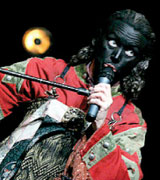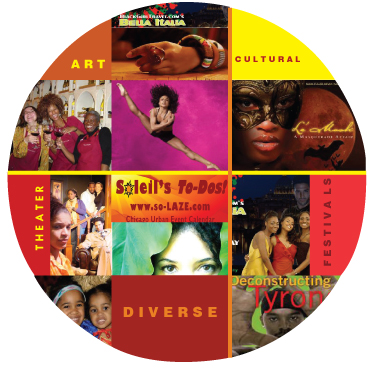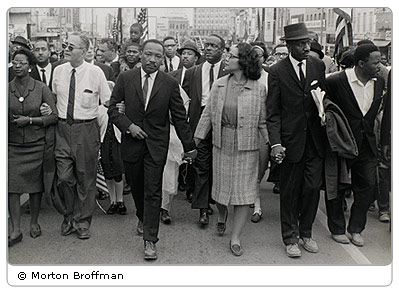 It was only because of the invitation from my best friend who was visiting from out-of-town that I went to Road to Freedom: Photographs of the Civil Rights Movement 1956-1968 at the Field Museum. It just kinda seemed old hat - I've studied civil rights and didn't think I had anything to gain from the exhibit, so it wasn't really on my radar. But, as I viewed the exhibit and rounded the corner from the first wall, I found myself frozen in place and time, and in tears.
It was only because of the invitation from my best friend who was visiting from out-of-town that I went to Road to Freedom: Photographs of the Civil Rights Movement 1956-1968 at the Field Museum. It just kinda seemed old hat - I've studied civil rights and didn't think I had anything to gain from the exhibit, so it wasn't really on my radar. But, as I viewed the exhibit and rounded the corner from the first wall, I found myself frozen in place and time, and in tears.
The Road to Freedom is the largest exhibit of civil rights photos and memorabilia that has been assembled in twenty years. As soon as I entered the space, I was struck by the solemn and reverent air, an ambiance created by low lights, deep blue paint, the continual looping narrative of a video tape about the civil rights area and, of course, the photographs. The solemnity was so profound that people spoke in hushed tones and there was the occasional "shhhhhhhhh" directed toward children.
 Alone . . .
Alone . . .While the civil rights era is not a new subject for me, nor for most of us, the images were compelling. I was struck by the youth of the people photographed, unknowns as well as Jesse Jackson, Julian Bond, John Lewis and, of course, Dr. King. But, my breakdown occurred when I reached the photos of the desegregation of Little Rock Central High. Young Elizabeth Eckford did not get the message that the date for the African American students to start school had been pushed back by one day. So, this fifteen-year-old girl arrived alone and was the target of unimaginable venom. Even as I look at the picture today, I get chills as I think of the strength it must have taken for her to keep moving.
The exhibit gave a clear sense of the commitment people had to this movement that lasted not days, weeks or months, but years. Years to attain basic civil rights. Years. Commitment. Personal danger.
As I moved further through the exhibit, I was captivated by photos of people on the sidelines. African-Americans cheering on the protesters - both Black and White. Whites glaring as protesters passed in front of their homes.
 I remember after Roots aired, a popular Black male comedian joked with great braggadocio about what he would have done to massa if he were Kunta Kinte. The Road to Freedom made me wonder: what would I have done if I were alive then? Would I have been on the front line or would I have been on the sidelines cheering the protestors on or would I have been too scared to participate in any way whatsoever. I then asked myself - is what I'm doing now reflective of what I would have done then? What about you? Are you a participant or a spectator? Are you committed to a cause? Passionate about it?
I remember after Roots aired, a popular Black male comedian joked with great braggadocio about what he would have done to massa if he were Kunta Kinte. The Road to Freedom made me wonder: what would I have done if I were alive then? Would I have been on the front line or would I have been on the sidelines cheering the protestors on or would I have been too scared to participate in any way whatsoever. I then asked myself - is what I'm doing now reflective of what I would have done then? What about you? Are you a participant or a spectator? Are you committed to a cause? Passionate about it?
I urge you to visit the Road to Freedom: Photographs of the Civil Rights Movement 1956-1968, and take your children or a child in your life and ponder these questions. It is a powerful reminder of changes that can be made with sacrifice and commitment. The exhibit ends on September 7th.
Stephanie!
Looking for more
To-Do? Visit
www.so-LAZE.com!
 Sunday, June 20, 2010 at 7:19AM
Sunday, June 20, 2010 at 7:19AM 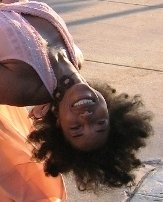

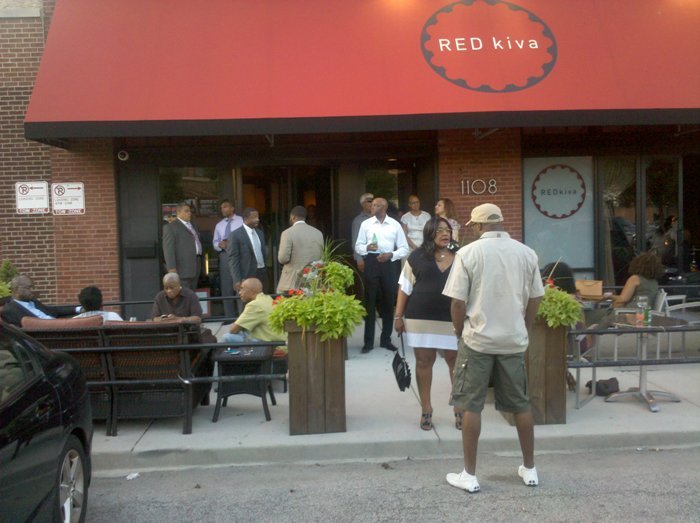


 It was only because of the invitation from my best friend who was visiting from out-of-town that I went to
It was only because of the invitation from my best friend who was visiting from out-of-town that I went to 
 I remember after Roots aired, a popular Black male comedian joked with great braggadocio about what he would have done to massa if he were Kunta Kinte. The Road to Freedom made
I remember after Roots aired, a popular Black male comedian joked with great braggadocio about what he would have done to massa if he were Kunta Kinte. The Road to Freedom made  Stephanie S. Green, NBC Chicago Street Team
Stephanie S. Green, NBC Chicago Street Team



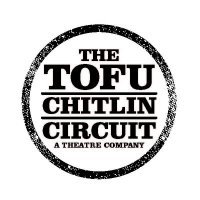 Kudos to the Tofu Chitlin' Circuit for putting together yet another excellent forum for discussion at The A la Carte: Candied Yams Edition. A number of folks were pretty passionate about their position, but the tone was respectful and the learning opportunity was cool. (Okay, the candied yams, roasted chicken, battered tofu and sweet potato chips with bleu cheese & roasted pecan dip were all so very tasty!) I have a lot to learn about theater, so I always try to take advantage of post-performance discussions as they tend to make the theater experience so much more enriching. Believe me - there have been a number of times that I've left a performance a little lost; unsure of what the message was supposed to be. Sometimes discussions with a friend or a well-written review provide a little clarity that may have been more helpful before the performance than afterwards. And, sometimes after a performance, I find myself listing to bits of conversations or searching the faces of others leaving the performance, wondering what they're thinking.
Kudos to the Tofu Chitlin' Circuit for putting together yet another excellent forum for discussion at The A la Carte: Candied Yams Edition. A number of folks were pretty passionate about their position, but the tone was respectful and the learning opportunity was cool. (Okay, the candied yams, roasted chicken, battered tofu and sweet potato chips with bleu cheese & roasted pecan dip were all so very tasty!) I have a lot to learn about theater, so I always try to take advantage of post-performance discussions as they tend to make the theater experience so much more enriching. Believe me - there have been a number of times that I've left a performance a little lost; unsure of what the message was supposed to be. Sometimes discussions with a friend or a well-written review provide a little clarity that may have been more helpful before the performance than afterwards. And, sometimes after a performance, I find myself listing to bits of conversations or searching the faces of others leaving the performance, wondering what they're thinking. 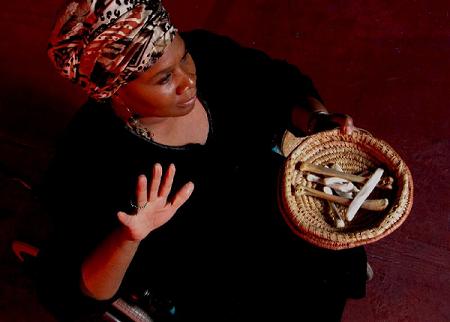 My thought so far is to select a wide range of theater performances at various venues. We'd have an educational session or discussion forum in advance of the performance, which would be open to the public. Then, on a selected date, we'd attend the performance as a group, followed by some discussion and socializing. Since I'd like for you to participate, I'd also like your ideas! What type of format would you be interested in? Would you be interested in pre-performance events? Would you prefer to just keep it uncomplicated and enjoy a good laugh? Do you have recommendations for performances? Are you open to attending a play for a couple of hours
My thought so far is to select a wide range of theater performances at various venues. We'd have an educational session or discussion forum in advance of the performance, which would be open to the public. Then, on a selected date, we'd attend the performance as a group, followed by some discussion and socializing. Since I'd like for you to participate, I'd also like your ideas! What type of format would you be interested in? Would you be interested in pre-performance events? Would you prefer to just keep it uncomplicated and enjoy a good laugh? Do you have recommendations for performances? Are you open to attending a play for a couple of hours 